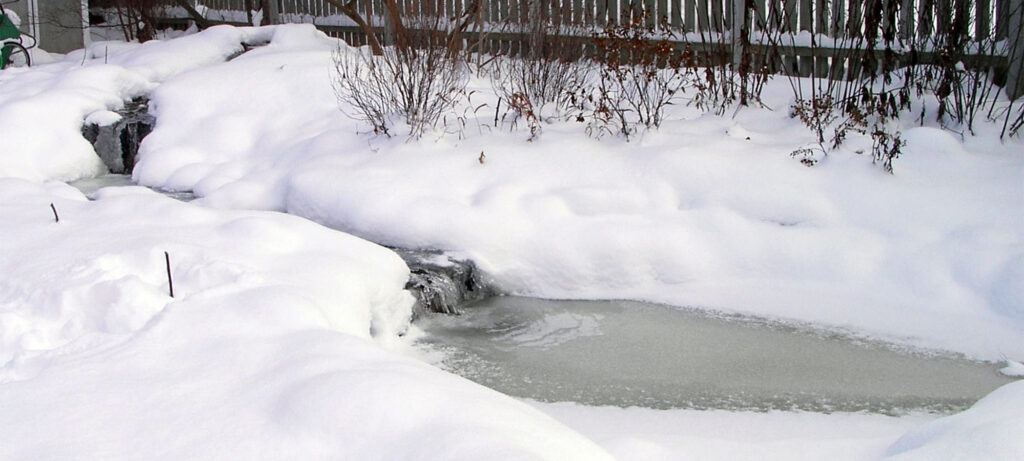
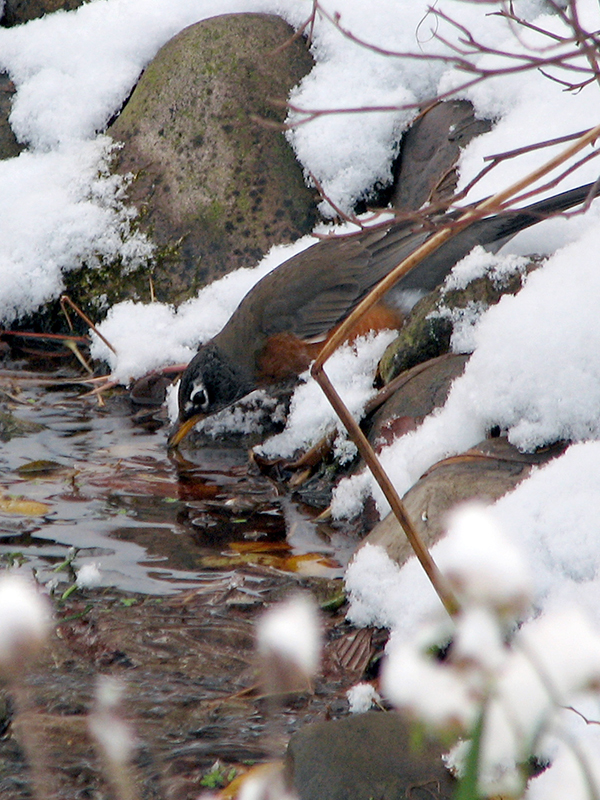
Water is just one of the many ways our habitat garden is different in our cold, snowy Central New York winters. Wildlife needs water in winter just as we do.
Here, this robin (and yes we do have a few robins in the winter!) is getting a drink from our stream in winter.
But wildlife native to our region has survived for thousands or millions of years without our help. So what do we do with our ponds and birdbaths in the winter?
The pond and stream
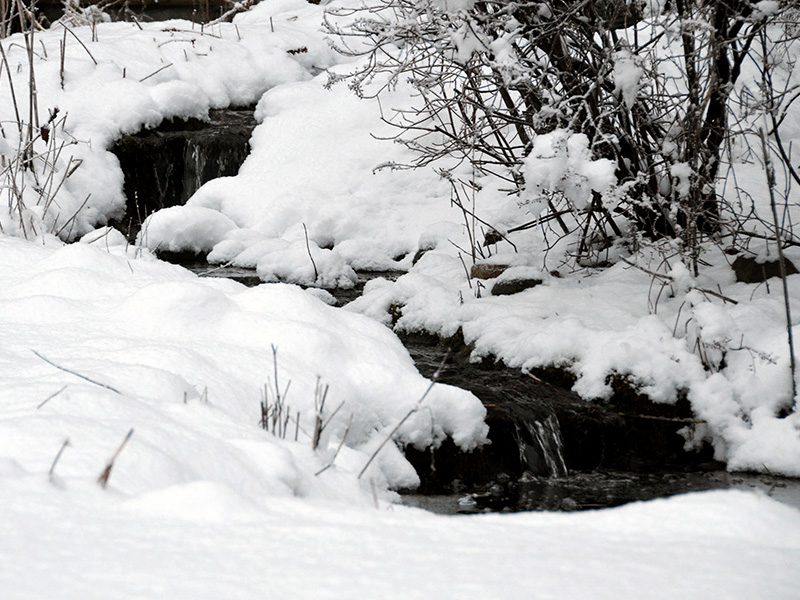
Our Aquascape owner’s manual recommends leaving the waterfalls going all year. In fact, it says that winter can be the most beautiful time with icicles and other icy decorations. But were they talking about Central New York winters?
The pond pumps 2,000 gallons of water an hour. In a 1,000-gallon pond, the water circulates through twice an hour, so it probably wouldn’t totally freeze. We tried leaving it running the first winter, which was unrelentingly cold with no intermittent thaws, and we found it was a constant worry.
Perhaps Aquascape was referring to just a pond with a waterfall going directly into the pond, which might not be a problem. Our wide, shallow stream, however, seemed to freeze very easily.
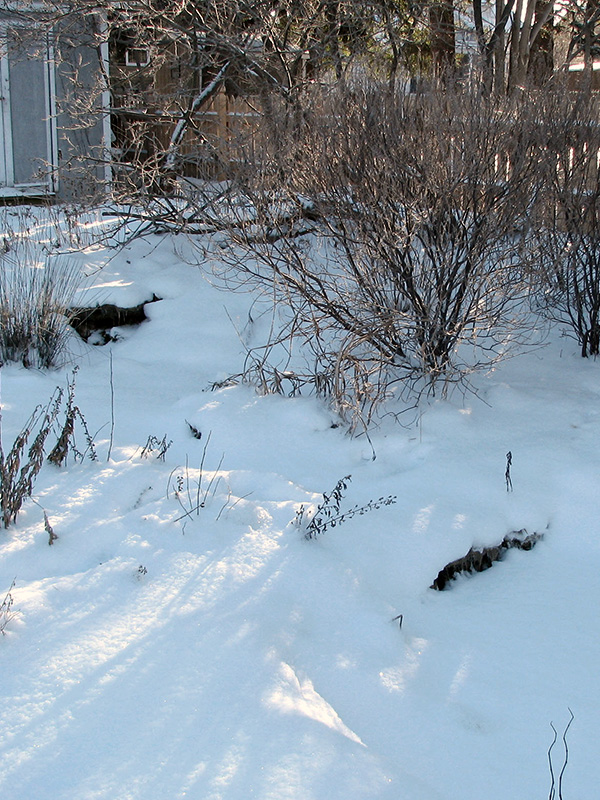
We finally decided to bring the pump inside — sitting in a bucket of water as directed — so we wouldn’t have to worry about water being diverting by ice dams and the pump being damaged by insufficient water.
And in CNY, there’s so much snow that there isn’t much to see, especially since we aren’t outside very much in the winter. Cooped up inside, we couldn’t appreciate the soothing sounds of running water anyway. And now that we’re more conscious of climate change — and thus our energy use — we’re just as happy to not use energy all year.
We generally start the pond back up again in mid to late March. This particular year (in the photo above), we thought winter was over, but this late snowfall created this winter-like wonderland for a few days. (And we’ve been known to have snowstorms on Mother’s Day!) These occasional snowfalls don’t seem to cause any problem with the stream since after mid-March, the snow and ice doesn’t stick around long enough to hurt anything.
The wildlife pond
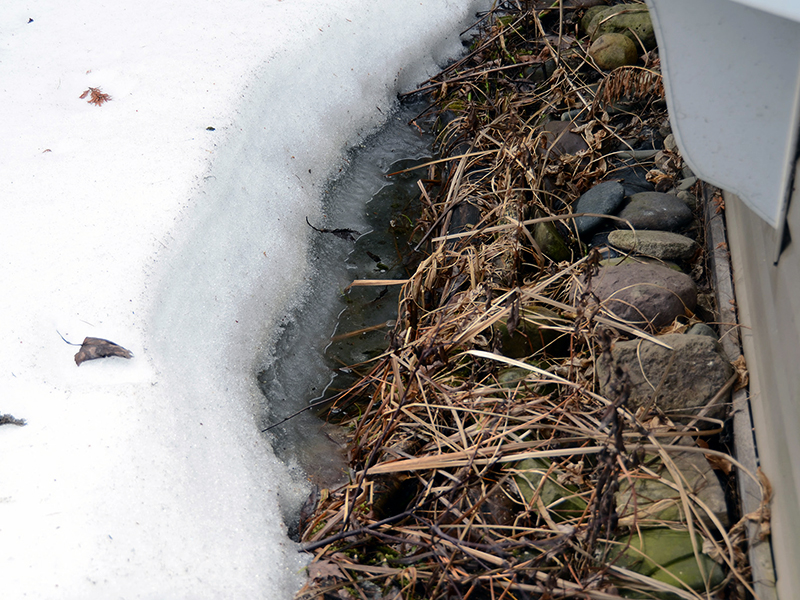
We don’t do anything special with our wildlife pond in the winter.
But since this pond is right near the house, if anything thaws at all, it’s likely to thaw here first.
I’ve noticed mourning doves flying out from below the bay window in the winter, and I suspect that they’re getting water from the pond along the house.
It also can thaw on the very shallow “beach” area at the end where the morning sun hits it. So even though we don’t do anything special with this pond, it still provides some water resources when other water is scarce.
Birdbaths
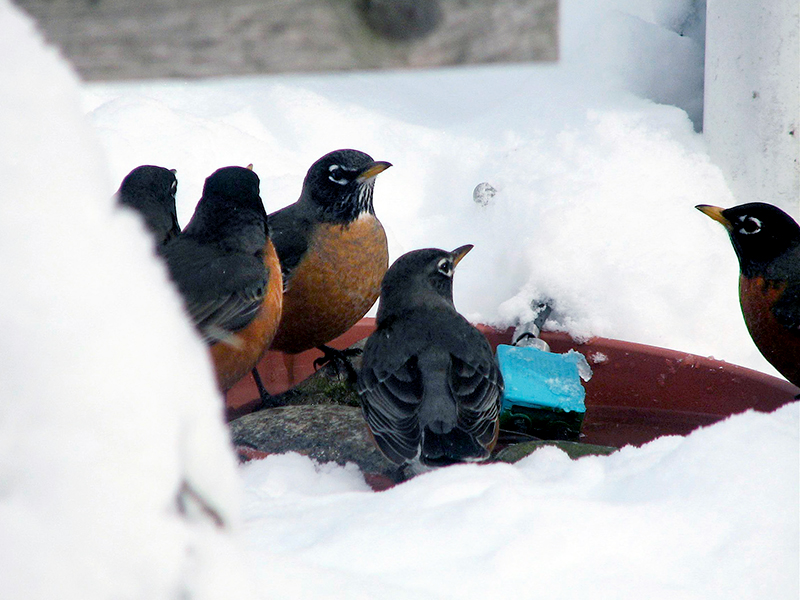
We also provide water in winter by using this inexpensive heating coil (the aqua-colored device in the photo) designed for birdbaths. We use a plastic saucer designed for large flower pots, since a clay saucer would probably crack in the winter. We put stones in the saucer so birds will be less likely to take a bath and also so they can perch on them to reach the water.
Perhaps a better idea is to put a non-metallic mesh grille (perhaps made of wooden dowels) over the saucer as Laura Erickson recommends in 101 Ways to Help Birds. She says birds bathing in heated birdbaths have been known to “drop like stones” when their feathers freeze after leaving the water.
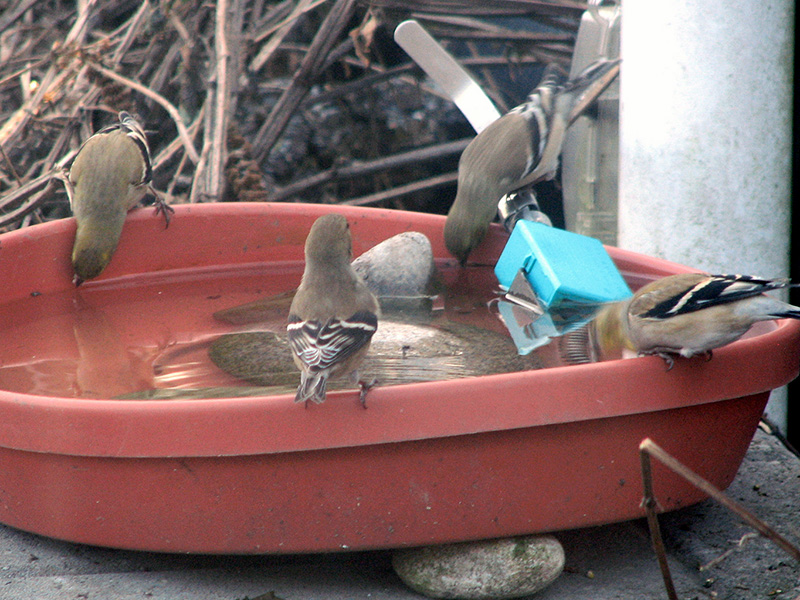
I’ve also read cautions about NOT using antifreeze in the water. It seems obvious not to put toxic chemicals in water intended for drinking (I certainly wouldn’t want to drink water with antifreeze in it!), but I guess some people must do it or they wouldn’t have to warn against it. PLAIN WATER ONLY!
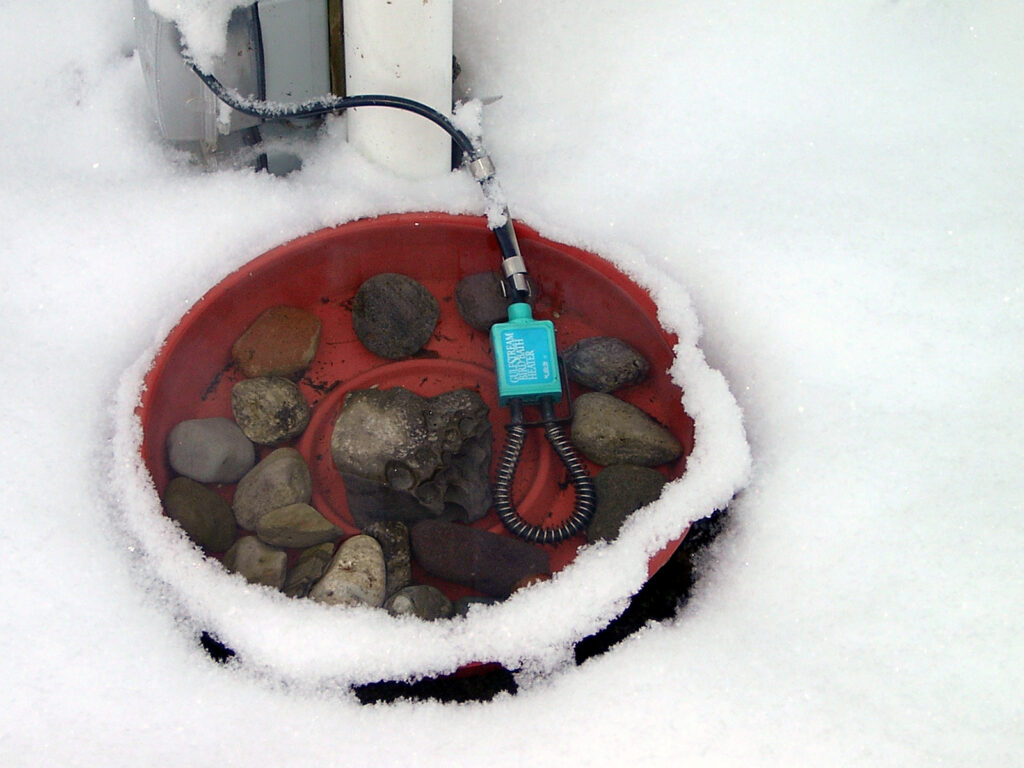
Of course, another issue is whether we should be using electricity in this way at all. Birds do use this water source, but of course they’re perfectly capable of getting water from snow, though at an energy cost to them.
(And I have to admit it would also be nice to not have birdbath cleaning duties in the cold winter months, since they still do need to be cleaned every week.)
I doubt that it uses an inordinate amount of energy, which I could balance against the amount of energy we save by hanging our clothes outdoors from March to November and on indoor drying racks all winter, using only LED light etc etc. (Although this kind of energy trade-off thinking isn’t going to begin to solve the climate crisis …)
But another reason I like providing water in winter is that otherwise birds might be tempted by the salty puddles at the sides of the road — puddles created by the road salt our CNY highway departments use generously. (It’s very bad for our vehicles also.)
Resources
- Cornell Lab of Ornithology’s All About Birds:
- Drinking water entices birds year-round, but keeping it ice free in winter is not as critical as many people believe. Birds have several physiological mechanisms for conserving water, and can usually get plenty from snow or dripping icicles.
- Read more about birdbaths in winter
